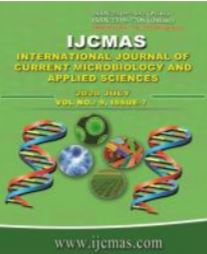


 National Academy of Agricultural Sciences (NAAS)
National Academy of Agricultural Sciences (NAAS)

|
PRINT ISSN : 2319-7692
Online ISSN : 2319-7706 Issues : 12 per year Publisher : Excellent Publishers Email : editorijcmas@gmail.com / submit@ijcmas.com Editor-in-chief: Dr.M.Prakash Index Copernicus ICV 2018: 95.39 NAAS RATING 2020: 5.38 |
The study was conducted at Cattle Yard of Livestock Farm located at National Dairy Research Institute, Karnal. There are four major seasons in the year viz. rainy, autumn, winter and summer. The fodders and feed fed to Karen fries cattle are collected in all seasons. Four samples of each fodder (green and dry) and concentrates mentioned above were collected in each month (one sample per week) in the respective season. Concentrations of calcium, phosphorus, zinc, copper and manganese were determined. The Ca level in green fodders was no significant (P<0.05) difference among the season. Phosphorus level was observed higher in winter (0.35%); however, there was significant difference (P<0.05) among the season. There is no significant difference in other trace minerals Zn. Cu and Mn respectively among the season. In dry roughages higher level of calcium was observed in summer season (0.47%) and there was no significant difference among the season. Phosphorus level was higher in summer (0.42%) lower in rainy (0.27%) and significant difference (P<0.05) in summer and rainy and autumn season. Trace minerals zinc, copper and manganese were no significant difference among the season. In concentrates both macro (Ca and P) and trace minerals (Zn, Cu and Mn) among the four season no significant difference observed. It may be concluded that P, Zn and Mn need supplementation for balancing the total ration feed in different season to optimize productivity in dairy animals. This study results suggest that mineral contents of common feeds and fodders under existing feeding practices have to be evaluated regularly to identify the deficiency and development of supplementation strategies necessary to optimize productivity of animals.
 |
 |
 |
 |
 |